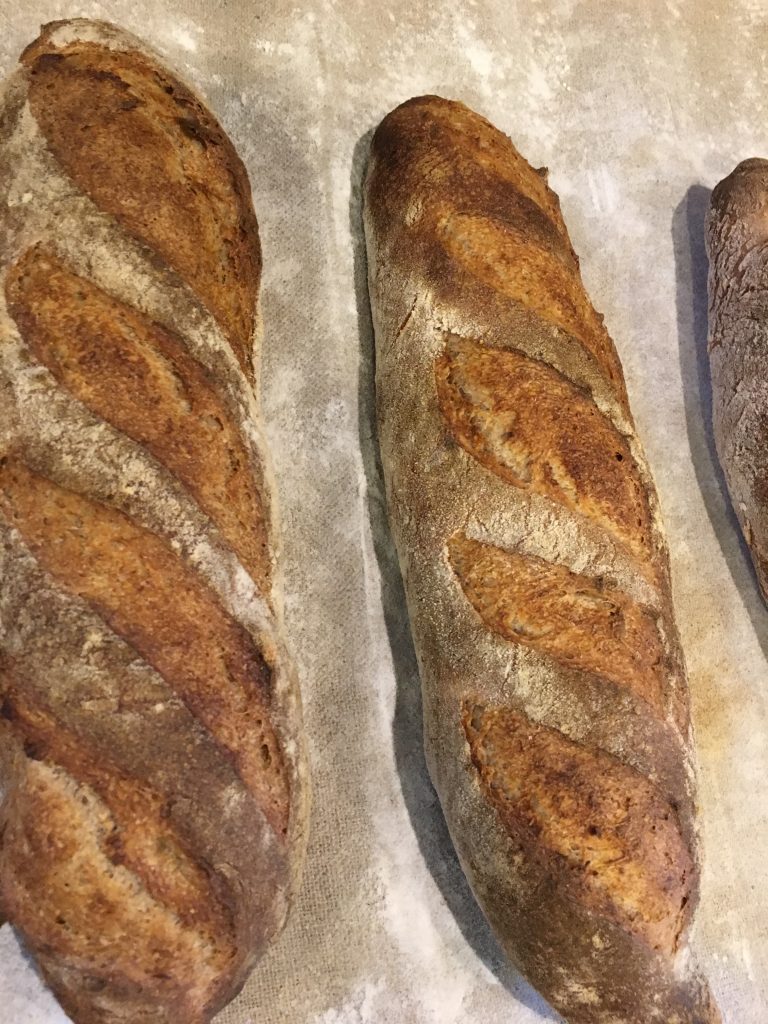One of the best souvenirs I brought back from the United Kingdom was a rye sourdough starter. I got it from Andrew Whitley in Scotland who back in 1960 obtained a sample when he was studying production of rye bread in the former Soviet Union. The factory he took it from was enormous: more than a million loaves of baked sourdough rye emerged every day. In 1960 America we were changing food to fit into our machinery. American doughs were doped with extensibility agents so they could withstand the spinning arms of huge kneading machines. In contrast, Russian factories — just as vast as America’s — were comprised of hundreds of small bakeries. Women in babushkas made rye breads in small ovens and placed them by the thousands on conveyor belts. The Soviets distributed more than were needed. Thousands of uneaten breads returned to the factory where they were soaked and boiled and returned to the production line. Soaked rye breads were joined by fresh rye flour and rye sourdough to produce new loaves.
Making rye bread is difficult because rye does not have much gluten. That means its dough is terribly slippery and very sticky. It does not rise much, but I learned some rye techniques in Scotland and have been practicing for months. The rectangular loaf in front is 95% rye flour with just a few oats and a little molasses added. It baked in a covered square-sided pan for well over an hour to begin removing some of the moisture. After coming out of the oven a nearly 100 percent rye must sit uneaten for at least a day while additional moisture is released from its interior. The result is a tangy, almost zesty, rye bread that can be sliced more thinly than the piece of cheese you put on top. Moreover, the bread stays fresh for more than a week.
The round loaf with the concentric imprint of the boule where it sat just before baking (it is behind the rye) was made with a white flour starter, rather than the rye starter. It was supplemented with half a dozen mashed, baby potatoes and enough wholemeal rye flour to give the loaf some meatiness.

These baguettes (there were four) also began with the Russian rye starter. I added a cup of buttermilk and then adjusted the ratio of white flour to rye until it was approximately a 50:50 mix. The rye gave it color and taste, the white flour enough gluten for a beautiful rise, and the buttermilk mellowed the crumb to the softness of a ripe peach.
